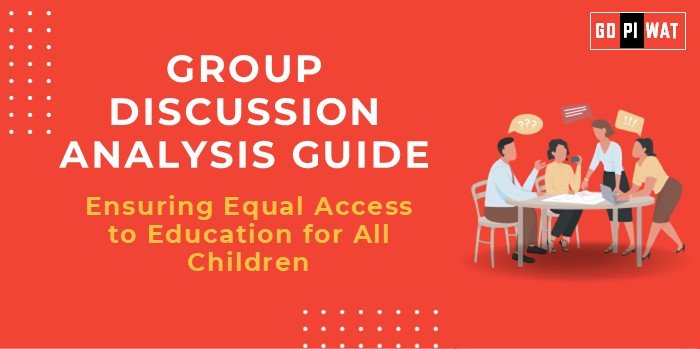📋 Ensuring Equal Access to Education for All Children
🌐 Introduction to the Topic
Context Setting: “Education is the cornerstone of societal progress, yet millions of children worldwide remain excluded due to socioeconomic, geographic, and systemic barriers. This inequity challenges governments striving for universal education.”
Topic Background: Globally, the Universal Declaration of Human Rights (1948) established education as a fundamental right. Despite initiatives like UNESCO’s Education for All (EFA), disparities persist, particularly in low-income and marginalized communities.
📊 Quick Facts and Key Statistics
- 📖 Global Illiteracy Rate: 12% of the world’s population, mostly in underdeveloped regions.
- 🌍 Out-of-School Children: 244 million globally, with 50% concentrated in sub-Saharan Africa (UNESCO, 2023).
- 💻 Digital Divide: Only 19% of children in low-income countries have access to online learning (World Bank, 2023).
- 💰 Public Spending on Education: OECD countries average 4.9% of GDP; many developing nations fall below 2%.
- 🇮🇳 India’s RTE Act (2009): Ensures free education for children aged 6-14, covering over 200 million children.
👥 Stakeholders and Their Roles
- 🏛️ Government Agencies: Implement policies, provide funding, and regulate standards (e.g., UNESCO’s Global Education Monitoring).
- 🤝 Private Sector: Develop innovative learning tools, invest in digital infrastructure, and run low-cost schools.
- 📢 Non-Profits and NGOs: Support grassroots initiatives, monitor policy implementation, and advocate for marginalized groups.
- 👪 Communities and Parents: Act as enablers through participation and localized solutions.
📚 Achievements and Challenges
Achievements:
- ✨ Increased Global Enrollments: Primary enrollment rates now exceed 90% globally.
- 📘 Successful Models: Finland’s universal education system demonstrates equity and excellence.
- 💡 Technology Integration: EdTech platforms like BYJU’S have expanded access in resource-scarce regions.
- 📈 Policy Success: Brazil’s Bolsa Família has improved school attendance among impoverished families.
Challenges:
- ⚠️ Socioeconomic Barriers: Widespread poverty keeps children out of school.
- 🌍 Geographic Exclusion: Remote areas lack infrastructure and qualified teachers.
- 👩🎓 Gender Inequality: Girls account for 60% of out-of-school children in certain regions.
Global Comparisons:
- 🇫🇮 Finland: Free education policies ensure no dropout rates.
- 🇮🇳 India: RTE Act improved enrollment but faces gaps in quality and infrastructure.
🗨️ Structured Arguments for Discussion
- ✅ Supporting Stance: “Government programs such as Finland’s universal education prove that systemic investment eradicates barriers.”
- ❌ Opposing Stance: “Despite substantial funding, education systems fail to reach marginalized communities due to policy gaps and corruption.”
- ⚖️ Balanced Perspective: “While policies have expanded access, addressing quality and equity issues remains critical for true educational inclusion.”
🌟 Effective Discussion Approaches
- 💡 Opening Approaches:
- 📊 Highlight the 244 million out-of-school children globally, underscoring the urgency for action.
- 🌍 Contrast Finland’s success with sub-Saharan Africa’s struggles to illustrate global disparities.
- 💬 Counter-Argument Handling:
- Acknowledge systemic issues (e.g., corruption, funding limits).
- Suggest solutions like public-private partnerships or targeted subsidies.
📈 Strategic Analysis of Strengths and Weaknesses
- ✅ Strengths: Proven models, increasing global awareness, and advancing technology.
- ⚠️ Weaknesses: Underfunded initiatives, inadequate teacher training.
- 🌟 Opportunities: EdTech expansion, international collaboration.
- ⚡ Threats: Political instability, resource constraints.
🎓 Connecting with B-School Applications
- 🌍 Real-World Applications: Analyze education funding in public finance, develop EdTech business models, or study operations in remote schooling logistics.
- 💬 Sample Interview Questions:
- “What lessons can India learn from Finland’s education system?”
- “How can technology bridge the educational divide in rural areas?”
- 📘 Insights for Students: Focus on leveraging digital tools, improving public policy, and fostering sustainable partnerships.


